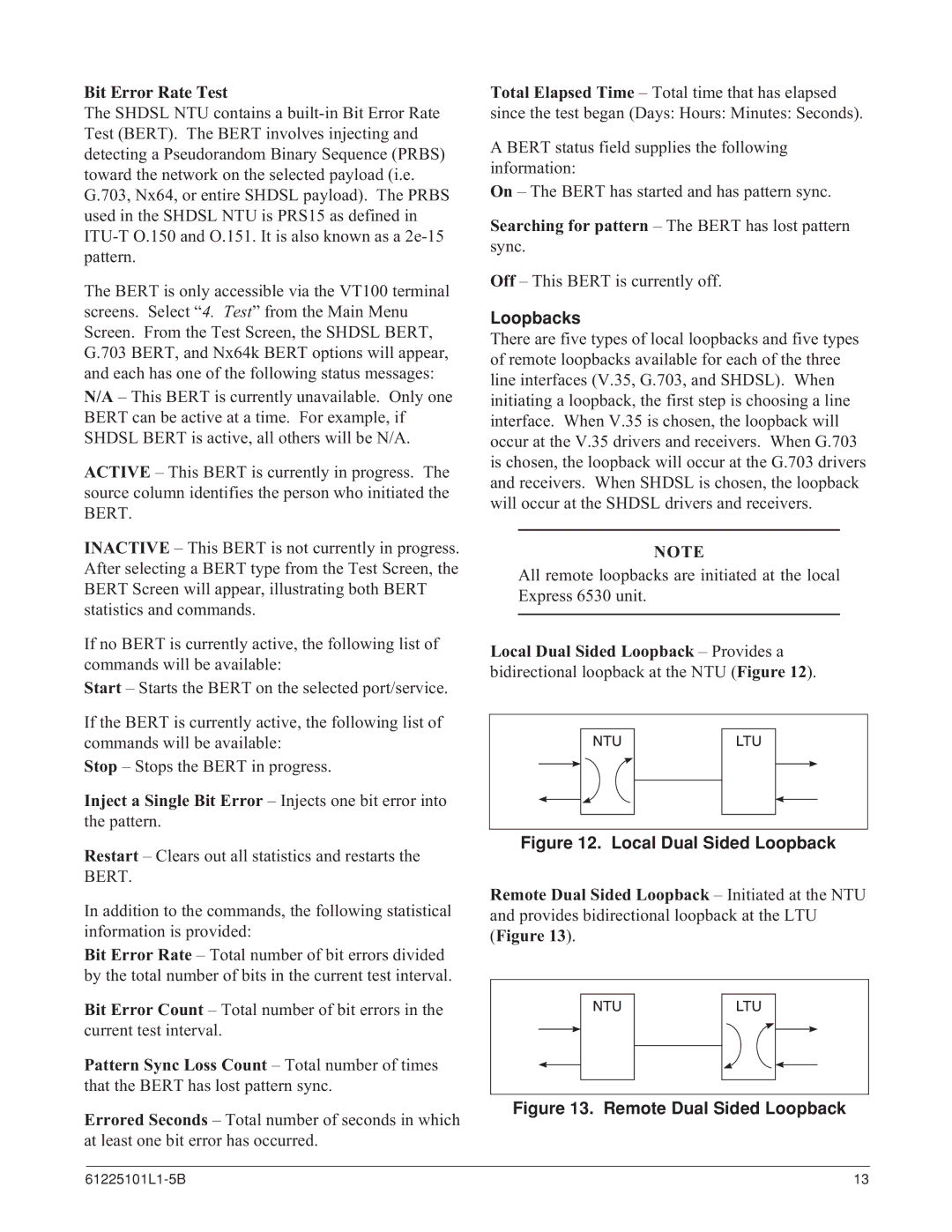
Bit Error Rate Test
The SHDSL NTU contains a
The BERT is only accessible via the VT100 terminal screens. Select “4. Test” from the Main Menu Screen. From the Test Screen, the SHDSL BERT, G.703 BERT, and Nx64k BERT options will appear, and each has one of the following status messages: N/A – This BERT is currently unavailable. Only one BERT can be active at a time. For example, if SHDSL BERT is active, all others will be N/A.
ACTIVE – This BERT is currently in progress. The source column identifies the person who initiated the BERT.
INACTIVE – This BERT is not currently in progress. After selecting a BERT type from the Test Screen, the BERT Screen will appear, illustrating both BERT statistics and commands.
If no BERT is currently active, the following list of commands will be available:
Start – Starts the BERT on the selected port/service.
If the BERT is currently active, the following list of commands will be available:
Stop – Stops the BERT in progress.
Inject a Single Bit Error – Injects one bit error into the pattern.
Restart – Clears out all statistics and restarts the BERT.
In addition to the commands, the following statistical information is provided:
Bit Error Rate – Total number of bit errors divided by the total number of bits in the current test interval.
Bit Error Count – Total number of bit errors in the current test interval.
Pattern Sync Loss Count – Total number of times that the BERT has lost pattern sync.
Errored Seconds – Total number of seconds in which at least one bit error has occurred.
Total Elapsed Time – Total time that has elapsed since the test began (Days: Hours: Minutes: Seconds).
A BERT status field supplies the following information:
On – The BERT has started and has pattern sync.
Searching for pattern – The BERT has lost pattern sync.
Off – This BERT is currently off.
Loopbacks
There are five types of local loopbacks and five types of remote loopbacks available for each of the three line interfaces (V.35, G.703, and SHDSL). When initiating a loopback, the first step is choosing a line interface. When V.35 is chosen, the loopback will occur at the V.35 drivers and receivers. When G.703 is chosen, the loopback will occur at the G.703 drivers and receivers. When SHDSL is chosen, the loopback will occur at the SHDSL drivers and receivers.
NOTE
All remote loopbacks are initiated at the local Express 6530 unit.
Local Dual SidedNTULoopback – ProvidesLTUa bidirectional loopback at the NTU (Figure 12).
Figure 12. Local Dual Sided Loopback
Remote Dual SidedNTULoopback – InitiatedLTU at the NTU and provides bidirectional loopback at the LTU
Figure 13. Remote Dual Sided Loopback
13 |
